When it comes to hiking, some people just can’t resist the thrill of climbing the more difficult terrains. This is more than just a rocky slope towards a summit; the real challenge is getting to the top of a rocky cliff after a hard day’s work and celebrating your victory. But you can’t do that if you don’t have the right kind of climbing rope.
They may seem the same to you, but there are a lot of different features to rope that you may not be aware of. That’s why knowing how to choose climbing rope is not only vital to enjoying a good day of rock climbing, but it could mean the difference between life and death.
Features to Consider
When you’re shopping for climbing rope for the first time, you should keep four important features in mind so that you can compare and ensure that you’re getting exactly what you’re looking for.
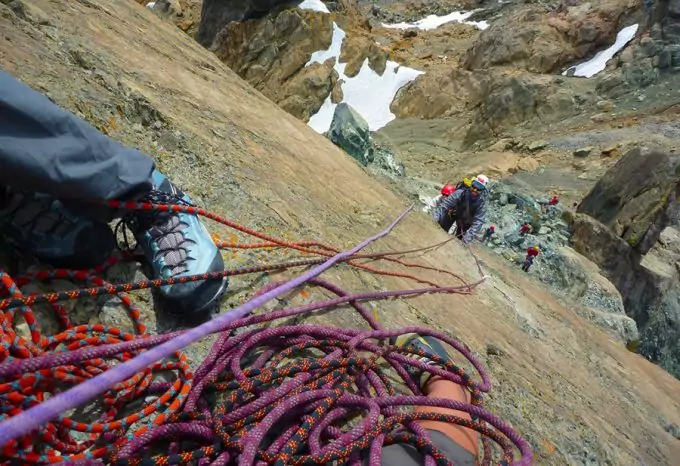
These are:
- type of rope: comes in single, half, twin, and static
- diameter and length: this affects weight and durability
- specific features: these not only improve upon the use of your rope, but help you understand it better as well
- safety ratings: this is important when you’re considering what kind of climbing you’re interested in
If this is your first time climbing, then it’s best to see the expertise of a professional to help you pick out the right rope. After all, your personal safety is in your own hands.
Types of Rope
Including the types mentioned above, they can be further divided into static and dynamic ropes. Static ropes are what their name suggests, and are really made to be used on their own. They have less give than dynamic topes, and so are not suitable for top roping or lead climbing.

Dynamic ropes, on the other hand, are constructed to stretch in order to absorb the impact of a climber who is falling.
Dynamic ropes come in three different kinds:
- Single: if you’re going trad climbing, big wall climbing, sport climbing, or top roping, then this is the right rope for you. The term “single” means that the rope is designed and constructed to be used without any other rope. It’s available in a wide variety of lengths and diameters, so they’re more versatile than other ropes and make them the most popular.
And because there’s only one rope to worry about, it’s much easier to manipulate than a two-rope system. Some brands of single ropes have been dually rated as twin and half ropes so that they can be used with other climbing techniques. You can identify a single rope by the “1” on each end.
- Half: work well in trad climbing on multi-pitch routes, ice climbing, and mountaineering. When using half ropes, two ropes are used and they are clipped together for protection.
This way, you can limit your rope dragging when you’re climbing meandering routes. The method does require some practice, however.
Half ropes does have a few pros and cons that you should be aware of.- Pros: as mentioned before, it reduces the amount of dragging rope; you can rappel faster with two ropes than you can with a single rope; if one ropes gets damaged, you’ll still have a backup to prevent you from falling
- Cons: more effort and skill is required than using a single rope; combined weight is much heavier than single ropes
When using half ropes, matching pairs should be used; don’t mix up sizes and brands, as this can lead to terrible results. You can identify half ropes with the circled 1/2 at each end.
- Twin: they work in a two-rope system, but what makes them different from half ropes is that they are always clipped together for protection. This leads to more rope dragging behind you than half ropes, so it is better suited for routes that don’t meander too much.
Twin ropes are thinner as well, so they’re easier to carry and will be less bulky in your backpack.
Twin ropes also have their own pros and cons to consider.- Pros: you can rappel faster with two ropes than you can with just one; if one ropes gets damaged, you’ll still have a backup to prevent you from falling.
- Cons: more effort and skill is required than using just one; despite it’s reduced weight, it is still a bit heavier than just one.
The same can be said for twin ropes: don’t mix up sizes and brands. You can identify twin ropes with this symbol (∞) at each end. For the best kinds of ropes for outdoors, click on the link to our article on that topic.
Rope Diameter and Rope Length
It’s a given than a thinner rope is a lighter rope, but it can mean that it is also less durable.
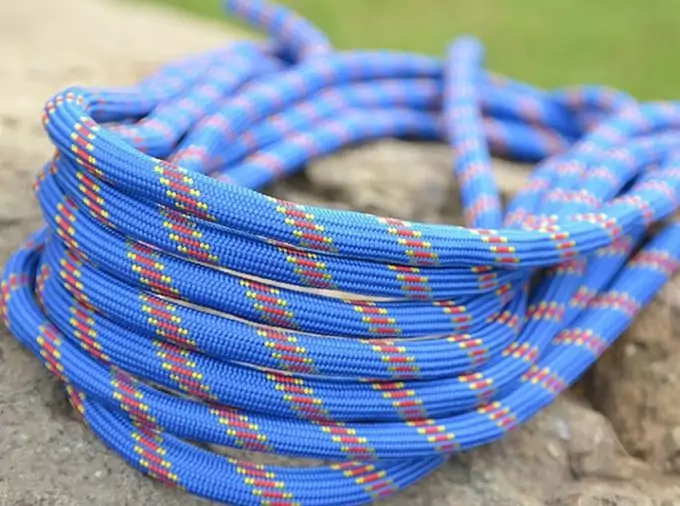
Thicker ropes, on the other hand, are more resistant to abrasion, allowing you to belay that much more safely, especially if you use it very frequently. The diameter of your rope is going to dictate which activities you’ll be engaging in.
- single ropes with a diameter up to 9.4 mm: the smallest of the climbing ropes, this kind of rope is extremely light and is very good for long climbs with multi-pitches, where how much weight you carry is important. A rope this thin, however, is not equipped to handle as many falls as a thicker rope. They can move more easily through the body of a belay, but they’re not well suited for sport climbs or top roping.
- single ropes with a diameter 9.5 to 9.9 mm: this kind of rope is good for a wide variety of climbing types, and are very light, so they won’t weigh you down as you hike. They’re also hardy enough to be used in top roping on crags.
- single ropes with a diameter 10 mm +: these are great for gym climbing, sport routes, big wall climbing, and frequent top roping. Their increased thickness makes them more durable for these kinds of events.
- twin and half ropes: half ropes are generally 8 to 9 mm; twin ropes are typically about 7 to 8 mm.
- static: usually about 9 to 13 mm, but are more commonly measures in inches; 7/16″ is the standard measurement for static ropes.
Now that the importance of the diameter has been discussed, it’s time to talk about the length of your climbing rope.
The length if your rope is determined by what kind of activity you’ll be engaging in. In general, dynamic ropes can be anywhere from 30 to 80 meters; 60 meters is considered to be the standard.
Outdoor climbing ropes need to be long enough so that 1/2 of its length is the same or greater than the distance of the route you’ll be climbing. Indoor climbing ropes, on the other hand, are a lot shorter, around 35 meters long.
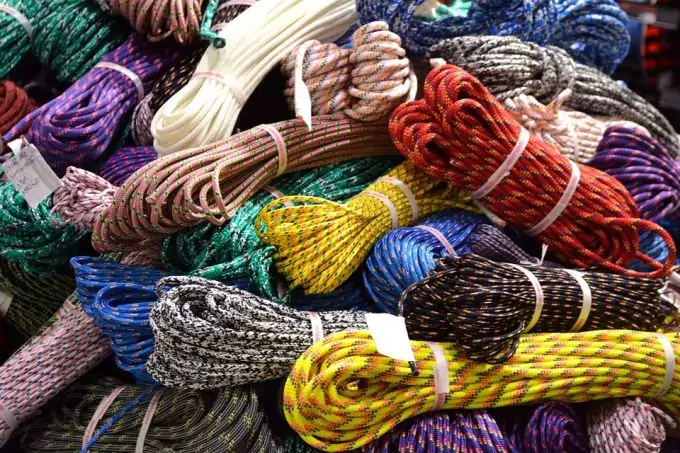
They are used for gym climbing, and should still be long enough to lower the climber to the ground. Static ropes are required in a variation of lengths. They are sold in measurements of feet so that it’s easy for you to get exactly the length required for your climb. If you’re not sure of the length, it would be best to consult experienced climbers as well as a guidebook for recommendations. See our article on the best approach shoes that you can use for your climb.
Specific Features
These features can make all the difference in the world when you’re comparison shopping for climbing ropes that suit your needs. They can improve your performance, and make your ropes much easier to use.
- Dry treatment: ropes are slightly porous, and when they get wet, they can become very heavy. Moisture almost makes them less capable of withstanding the forces associated with a fall, and climbing in cold temperatures can make that even worse.
It will freeze any water that gets inside your rope, making it extremely stiff and hard to work with. For this reason, many ropes are now dry-treated to prevent it from occurring. However, this makes the ropes more expensive. - Middle mark: this is a simple mark, usually made with black dye, to indicate the very middle part of the rope. This is essential for those who are rappelling so that they know how much rope that have left.
- Bicolour: bicolour is more than just the use of two colours. A change is made in the weave pattern of the rope that separates the two halves, and makes it easy to determine where the middle of the rope is.
This is an alternative to the black dye mark, but is also a bit more expensive. However, black dye can fade over time and disappear, so it’s best to have an identifier that will last through exposure to the elements. - End warning marks: black dye or thread is usually used to indicate that you’ve reached the end of your rope. This can be very useful to have when you’re rappelling or lowering a climber to the ground.
These features are intended for safety purposes, and should definitely be considered. Die hard climbers should definitely invest in the more expensive options, especially if they see themselves hiking on a regular basis and on very rough terrain. If you’re only planning to do indoor climbing, however, you may want to invest in the more affordable options.
Safety Ratings
The last important feature to consider is the safety ratings. There’s literally no reason to trust your life to a climbing rope that has little to no safety ratings whatsoever. The safety standards for climbing ropes were developed by The Union Internationale des Associations d’Alpinisme, and all climbing topes are tested in independent labs to ensure that they meet these standards.
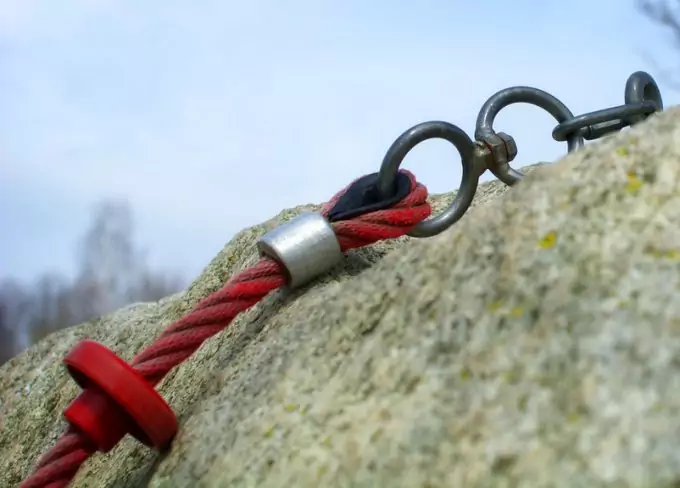
For all dynamic ropes, the packaging will list what the results of the tests are, and include numbers for fall rating, static elongation, dynamic elongation, and impact force. It is these ratings that will help you determine the best climbing rope for the kind of climbing you’ll be engaging in.
- Fall Rating: this is the number of falls a rope can withstand before it fails entirely. Lab tests use much greater force than what would occur in a real world fall, so you can rest assured that these ropes are durable.
Single ropes undergo a 80 kg weight being dropped onto them and must withstand at least 5 falls; half ropes use a 55 kg being dropped on a single strand and must withstand at least 5 falls; twin ropes use a 80 kg being dropped on two strands, and must withstand at least 12 falls.
Any ropes that meet or exceed these minimums are considered safe to be used for climbing. However, it’s still important to always check your rope for damage after a fall, just to make sure. Replace it if you notice any damage. - Static Elongation: another term for this is working elongation. The number refers to the amount of stretch a certain dynamic rope has with a weight of 80 kg tied to one end. For twin and single ropes, the elongation cannot exceed ten percent, while half ropes cannot surpass twelve percent.
These are important figures for those who are interested in top-rope climbing, carrying gear, and climbing with the use of ascenders on fixed ropes. - Dynamic Elongation: this is the measurement the rope stretches during the first tested fall. Lower numbers are better, because this means that climber that is falling won’t hit the ground or a ledge. However, a lower number also means that there is more impact to the climber, the belayer, and the gear. The UIAA only allows for a stretch of no more than forty percent.
- Impact Force: this is measure in kilonewtons, and refers to the amount of force placed on a falling weight in the first test fall. This number is directly related to dynamic elongation (lower impact number means higher dynamic elongation), so a fine balance needs to be struck between the two.
A lower impact force number, the less force there is on the climber, belayer, and gear. This provides a softer landing when a climber falls. However, that means a much greater stretch on the rope. For this reason, ropes with low impact force numbers are not suitable for top roping.
So how do you go about putting all these numbers together to get the right climbing rope for you? One way is practice. Another is speaking to a professional in the sport or someone who is familiar with the gear at a sporting goods store.
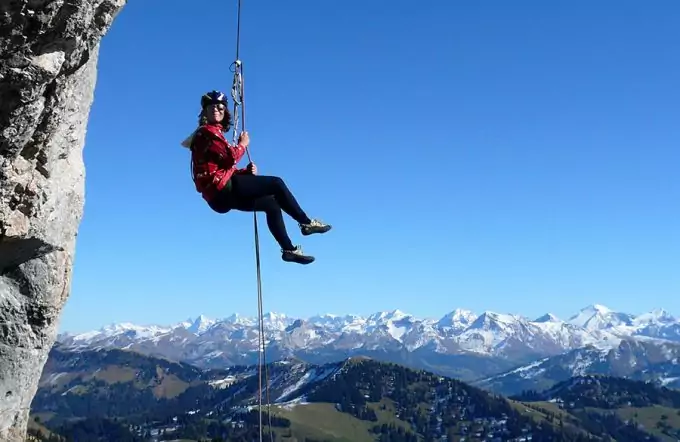
Getting as much assistance as you can is better than trying to figure it out for yourself, because if you get it wrong the first time, you may never have the chance to make another mistake again.
Climbing in the great outdoors can be quite dangerous, so it’s important that you reinforce your safety as much as possible with the right kind of gear. It’s a lot of information to take in, but once you’ve learned the differences and know what to look for, you’ll soon become a natural. Do check out our guidelines and tips on how to tie knots for more insight.

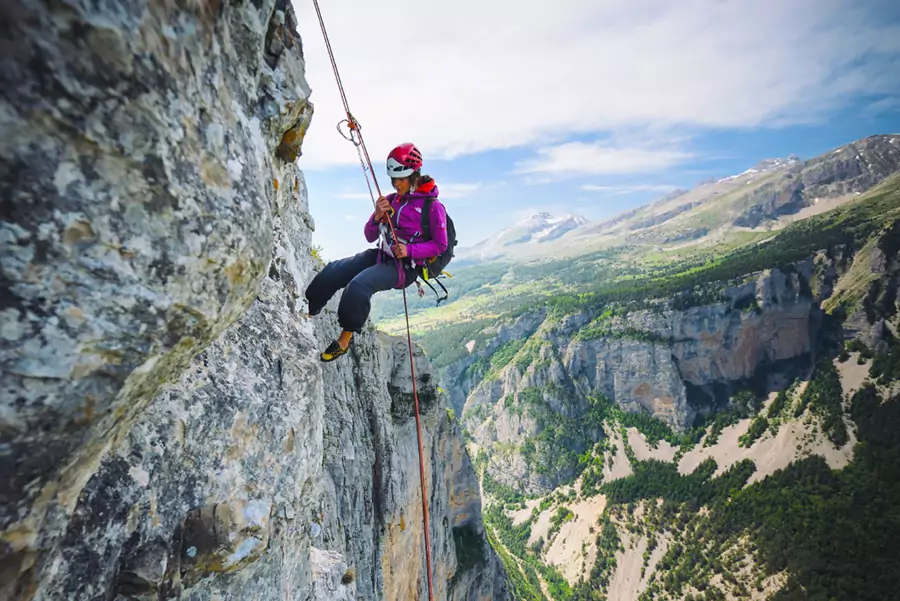
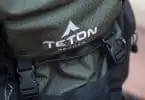





I wish I had read this article the first time I bought a climbing rope, it would have been so helpful. I had no idea what features to look out for. After reading numerous reviews, I finally settled for the GM CLIMBING 20ft / 50ft Accessory Cord Rope Double Braid. It is very strong, flexible and easy to knot. I have also used it in pulling different heavy items like the time my car got stuck.
Most newbies are a bit lost when it comes to choosing the right kind of rope for their needs. I’ve been there before and I thought that all ropes were the same – I couldn’t be more wrong! What I’ve learned so far from experience is to always looks for the safety rating of the rope that you want. Take into consideration where you are going to use it and how the material will fit into your needs. Note the extra features that may come with it.
Everyone planning to buy a climbing rope needs to read this. You will not realize how much you need to know about climbing ropes before attempting to buy one. Quite a good read for first-time climbers and even pro-climbers deciding on what rope to buy next. Thank you for sharing.
You’re welcome Matt and I hope you read some more articles that will empower and improve your skills when hiking or camping.